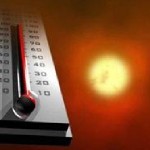The holiday season is upon us again – a time for celebrating with family and friends, and remembering our many blessings.
Of course, the most important of these are the love of our family and friends and the food that nourishes us. We hope these blessings are shared by all our customers.
As the weather gets colder, we are grateful, too, for the comfort of our homes. It’s worth remembering that even the simplest of our modern homes are full of luxuries that people of centuries past could not even have imagined.
Take central heating, for example, which did not become widespread until the 20th century (although it was actually invented by the Romans). Here in the New World, early European settlers emulated the practices of the Native Americans, heating their homes with an open indoor fire and keeping out the cold with brightly-woven mats and furs. The houses stayed surprisingly warm during the winter (sometimes getting as hot as 90 degrees F, especially in the wigwams, which were better insulated than the colonists’ dwellings). But tending the fire was a tedious, time-consuming, dirty, and somewhat dangerous task – and as anyone who has ever made breakfast over a campfire will tell you, cooking three meals a day over an open flame was very challenging.
Indoor plumbing is another invention that early natives and settlers could not have imagined (although again, it had been invented long before by the ingenious Romans). During the long and arduous voyage to the New World, European colonists relieved themselves by sitting on shelves that jutted out over the sides of the ship; when they reached the New World, they simply went outdoors to do their business, even in the dead of winter. Even outhouses were luxuries in the early years. Baths were uncommon (sometimes a once-a-year event) and were not taken at all on board ship. When colonists did wash, they did so in a nearby stream or pond.
So, the next time you press a button on your thermostat to turn on the heat, or flush your toilet, or take a nice warm shower, or cook a meal on a temperature-controlled oven – give thanks!
We’re grateful for the opportunity to help you keep your home warm, safe, and comfortable. Our customers are one of the many blessings for which we are thankful – now and all year long.
Happy Thanksgiving to all.









